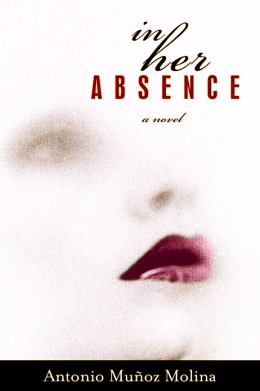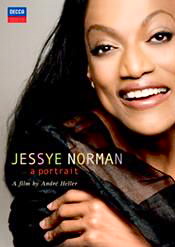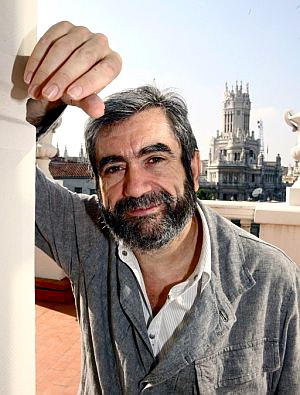Note: Antonio Munoz Molina is twice WINNER of Spain’s National Narrative Prize, and WINNER of Spain’s Premio Planteta de Novela, the most valuable literary prize in the world, after the Nobel Prize for Literature. He is also a FULL MEMBER of the Royal Spanish Academy and RECIPIENT of the Prince of Asturias Award for Literature.
“The woman who was not Blanca came down the hall toward Mario wearing Blanca’s green silk blouse, Blanca’s jeans, and Blanca’s ballet flats, her eyes narrowing into a smile as she reached him – eyes the same color and shape as Blanca’s but not Blanca’s eyes. She welcomed him home in a tone so identical to Blanca’s that it was almost as if she really were Blanca.”
 Antonio Munoz Molina, one of Spain’s premier writers, shows his intense psychological and atmospheric style in this short novel, a perfect introduction to this author for anyone who has not already read A Manuscript of Ashes, or any of Munoz Molina’s other works. In the latter, longer novel, the author’s scope is that of the Spanish Civil War, the people it absorbed, and the subsequent dictatorship of Generalissimo Francisco Franco. The present novel (which some will consider a novella), is of a much more limited scope – the life and love of Mario Lopez, an undistinguished worker in the city of Jaen, halfway between Madrid and the south coast of Spain. Mario, almost anonymous in his profession – a draftsman, rather than the architect he would like to be – is someone his wife Blanca considers a bureaucrat. She has, in the past, accused him of “settling for too little, of lacking the slightest ambition,” to which Mario has replied that “she, Blanca, was his greatest ambition, and that when he was with her he wouldn’t and couldn’t feel the slightest ambition for anything more.”
Antonio Munoz Molina, one of Spain’s premier writers, shows his intense psychological and atmospheric style in this short novel, a perfect introduction to this author for anyone who has not already read A Manuscript of Ashes, or any of Munoz Molina’s other works. In the latter, longer novel, the author’s scope is that of the Spanish Civil War, the people it absorbed, and the subsequent dictatorship of Generalissimo Francisco Franco. The present novel (which some will consider a novella), is of a much more limited scope – the life and love of Mario Lopez, an undistinguished worker in the city of Jaen, halfway between Madrid and the south coast of Spain. Mario, almost anonymous in his profession – a draftsman, rather than the architect he would like to be – is someone his wife Blanca considers a bureaucrat. She has, in the past, accused him of “settling for too little, of lacking the slightest ambition,” to which Mario has replied that “she, Blanca, was his greatest ambition, and that when he was with her he wouldn’t and couldn’t feel the slightest ambition for anything more.”
As this novel opens, something has obviously happened in the marriage of Mario Lopez, the protagonist in his thirties, and his wife Blanca, a woman who, on the surface, appears to have little in common with her husband. Munoz Molina, famed for his kaleidoscopic narratives which burst the limitations of chronology, creates a story that swirls back and forth and all around as he recreates the courtship, the early years, and the current crisis in the six-year marriage of these two people – Blanca, the sometimes confused, arts-oriented daughter of a well-to-do family from Jaen, and Mario, the insecure son of a rural family who has no familiarity or comfort with the expected (and socially rewarded) behaviors of those whose social level is based on the financial success of their ancestors. How he and Blanca ended up married is one of the mysteries of the novel that develops as the action proceeds in its roundabout way through time and flashbacks. Throughout, Mario reveals his love for Blanca, the only woman who has ever fully captured his heart – but someone he can no longer recognize as the novel opens.

Self portrait by Frida Kahlo. Blanca was particularly enchanted by Kahlo’s paintings. Photo: Banco de Mexico Diego Rivera Frida Kahlo Museums Trust
Mario, the reader learns, had originally met and come to know Blanca at a particularly vulnerable time in her life. Someone who has always kept a journal of her life, Blanca became involved as a younger woman with a painter named Jaime Naranjo, also known popularly as “Jimmy N,” ten years older than she, and through him she was also exposed to contemporary opera, theater, art – and alcohol and drugs. Though none of these are major interests of Mario, he has eventually come to appreciate the feelings she experiences from music. On her twenty-ninth birthday, Mario gives her a recording of Moncho singing “Llevatela – Take her Away,” a bolero which “intensely ennobled anything that she admired,” leading to a particularly poignant moment for the couple.
As Blanca’s background unfolds further through the back and forth action, she tells Mario, “You rebuilt me. As if you’d found a porcelain vase that was smashed into a thousand pieces, and you had the skill and patience to reconstruct the whole thing, down to the tiniest shard.”

Jessye Norman, one of Blanca’s favorite opera singers, can reduce Blanca to tears. Mario does not enjoy opera at all.
Blanca had been at the point of drifting into chaos during her relationship with Naranjo, but she had helped Naranjo become a success as an artist, helping him to win prizes but become a caricature of himself, socially and artistically. Her arrival at Naranjo’s apartment a day ahead of her expected time, however, reveals Naranjo’s limitations to her, and Mario just happens to be present when she crashes publicly soon after that. Mario’s own engagement to a woman for seven years, and his discovery that he really does not know her at all, make him particularly sympathetic to Blanca’s neediness when they eventually connect. Though she is from an elite family and he is not, they find comfort with each other, on some level, at least, until an event leads Mario to feel, after their six years of marriage, that he can no longer recognize her – or himself.
The conceit of Mario thinking that the Blanca who is in his apartment is a fraud, which repeats throughout the novel, becomes understandable as the novel moves back and forth in time, and the way that Mario and Blanca eventually come to terms with their relationship is both unusual and memorable. Though this is a short novel, its style is appropriate to its length, and the limited point of view allows the reader to draw thematic conclusions which have meaning and importance. Whether either character has an epiphany or a major moment of sudden insight is less important here than the fact that both come to some new knowledge of themselves and each other, however limited. And when the night arrives in which Mario realizes he may be able to understand the “woman who was not Blanca,” the reader realizes how and why he does this and what it means for the future.
The playing of “Llevatela,” a bolero by Moncho, proves to be a significant moment of communication between Blanca and Mario.
Note: Also by Antonio Munoz Molina: A MANUSCRIPT OF ASHES and LIKE A FADING SHADOW
Photos, in order: The author’s photo appears on http://www.latermicamalaga.com
The Frida Kahlo self portrait is from the Banco de Mexico Diego Rivera Frida Kahlo Museums Trust. http://arte.laguia2000.com
Jessye Norman, one of the opera singers who can reduce Blanca to tears, is shown here: http://www.operatoday.com A video of her singing Ave Maria may be seen here: https://www.youtube.com
ARC: Other Press

